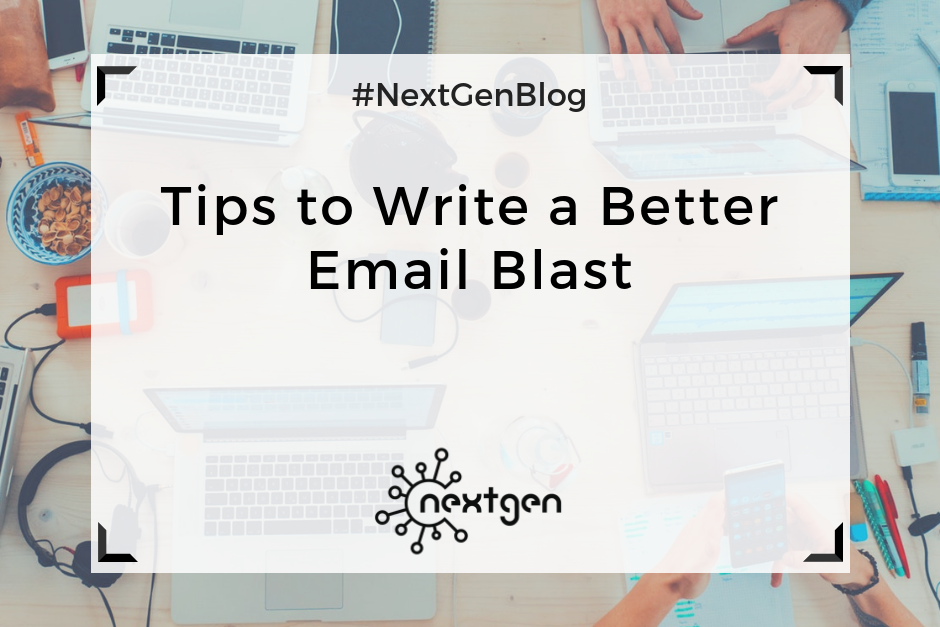
by Sofi | Nov 2, 2018 | Other
Digital marketing has greatly expanded and provided so many options for reaching consumers and potential clients, but sometimes all you need is a good old fashioned email blast. Put your mailing list to use to provide important information about new products, new services, sales, coupons, or general gratitude for your customer straight to their email. Although emails have also progressed to allow for a lot more design and functionality, a simple email often performs better than a fancy one. Here are some tips on how to write a better email for your email blast.
#1 Focus on well-written content
People are more likely to delete and stop opening your emails if they are not actually saying anything interesting or relevant. Focus on content over design in order to make sure that your email is staying relevant to the reader. After all, there is a reason for your email blast, and your content should reflect this reason.
#2 Write a catchy subject line
The first part of your email that someone will see is the subject line, so it acts much like the gatekeeper. No one will read the contents of your email if the subject line is appealing enough to make them open the email. It’s important to use actionable language that gives the reader an idea of what they will find within the email. Personalize your email to your target audience rather than to a specific individual whenever possible. This means not personalizing the subject line by adding in a name but instead addressing the needs or demographic of the recipient.
#3 Get to know your subscribers
It’s important to use a segmented mailing list that divides your contacts into groups based on their needs, interests, or relationship to the company. The information you are highlighting in your email blast might not apply to every single one of your contacts. Creating separate email lists helps personalize your email, which increases relevancy. Take the time to make informed groups that truly represent the different needs of your customers.
#4 Make your email interactive
When sending an email blast, the goal should be to incite a specific action from the recipient and a measurable response. Make your email interactive by giving your readers a clear call to action so they know what step to take next. This call to action should be as clear as possible and make it easy for the reader to follow through.
#5 Talk about benefits
Your email should provide value to the reader so that they have a reason to interact with your content. Many emails only explain the feature they are offering without clearly explaining what benefit this brings to the recipient. Even when discussing a discount, you need to give the potential customer a reason to take the offer. People receive digital offers every day, so why should they take your offer?
#6 Keep it brief
Most people don’t have time to read through a lengthy email and often skim through the content. Your message should be brief and to the point. Immediately provide the reader with value in order to catch their attention, and don’t hide the offer in a lot of unnecessary text. Make the process as simple as possible to turn your lead into a sale.
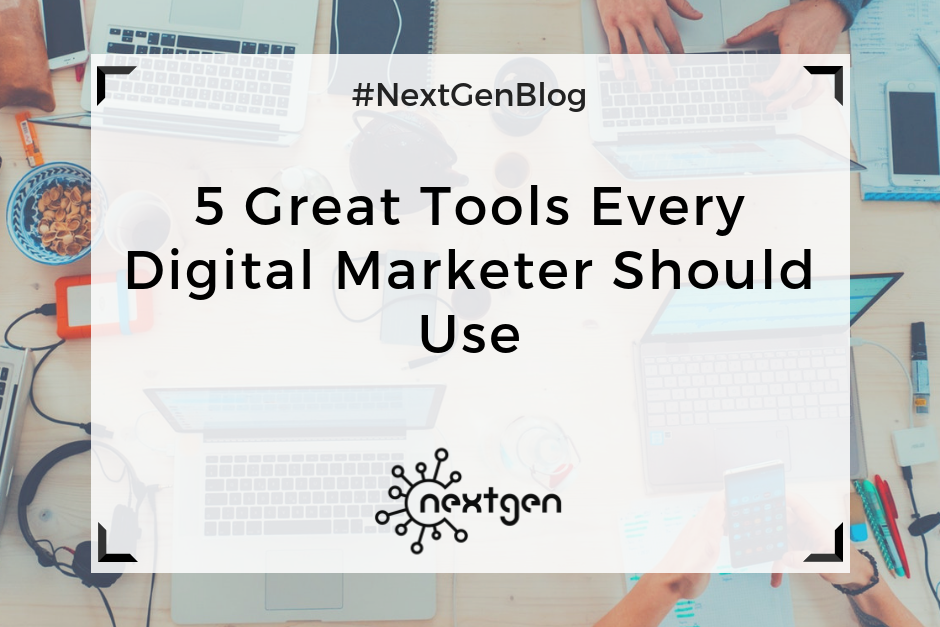
by Sofi | Oct 19, 2018 | Digital Marketing Tools
If you work as a digital marketer, you have to use various tools to promote brands through digital media. There are many digital marketing tools available for different purposes – and since digital marketing is still evolving – new tools are coming out all the time. However, you can’t use them all. Here is a list of 5 useful tools that you should definitely include in your digital marketing toolkit:
#1 WordPress
Every modern business owns a website these days. However, not all businesses can afford to hire developers to create their websites, so they use website building platforms that don’t require any coding skills. Currently, the most popular website building platform and content management system (CMS) is WordPress. It is very intuitive and easy to learn while offering a wide range of useful features. According to codeinwp.com, “WordPress is the fastest growing CMS, with roughly 500+ new sites being built daily in the top 10 million websites on the web”. This makes WordPress a very important tool that every digital marketer should know how to use.
#2 Hootsuite
Digital marketing is largely focused on social media and having a good social media strategy is essential for the success of any business operating in today’s digital world. Businesses often want to promote themselves on multiple social media platforms, but taking care of all social media activities on multiple platforms can be overwhelming. To ease that process, digital marketers can use Hootsuite, which is an online tool for managing multiple social media accounts from a single dashboard. You can use it to monitor social media activity on all of your profiles, schedule posts in advance, and engage with your audience. Most importantly, this tool saves digital marketers a lot of time, which they can use to focus on other aspects of their work.
#3 Facebook Business Manager
This is another social media tool, or more specifically, a tool for managing Facebook pages and ad accounts. In FBM, you can manage multiple pages and ad accounts, which is especially useful if you work with multiple clients. On every page you can publish and schedule content, get insights, create events, etc., while in the ad accounts you can create and run ads for your clients. Obviously, FBM is only useful for businesses that own a Facebook page, but Facebook is still the number one social network in terms of active users. Nowadays most businesses do own a Facebook page, and that’s why FBM is a must-have in every digital marketer’s toolkit.
#4 Canva
Canva is an online tool used for designing different types of graphics, which uses a simple drag-and-drop format. Featuring a variety of photos, illustrations, fonts, and other elements, it’s an excellent tool for creating visual content. There are ready-to-use design templates like: social media, presentation, infographic, book cover, blog banner, brochure, and many more. However, there’s also an option to create a design with your own custom dimensions, and many of the photos and other elements are available for free. Using Canva doesn’t require any special designing skills – all you need is a bit of creativity and imagination.
#5 MailChimp
The last tool on this list is MailChimp – an online tool for email marketing. Emails are still an effective method of communication, so a lot of businesses focus on creating effective email marketing campaigns. In MailChimp you can choose from a variety of email templates or design your own custom email using the available content blocks: image, text, buttons, social share buttons, etc. You can also create contact lists and campaigns and later check MailChimp reports to see how well your campaigns have performed. Creating beautiful emails and newsletters is often an essential part of an effective marketing strategy, so make sure you add this tool to your digital marketing arsenal.
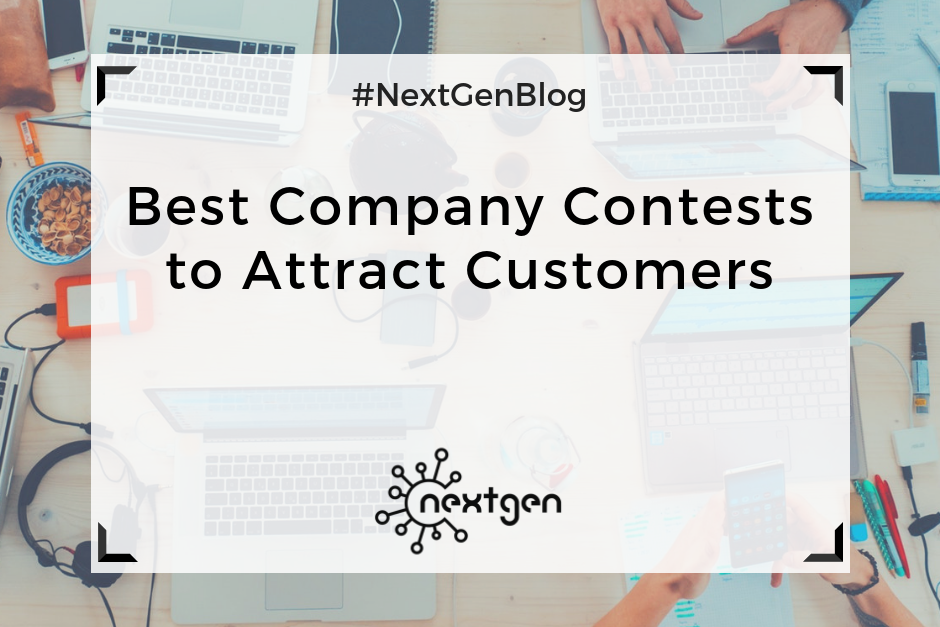
by Sofi | Oct 12, 2018 | Other
Company contests, giveaways, and sweepstakes are a long-time favorite marketing technique. They can spread brand awareness, bring attention to a new product or service, or work toward a specific business goal. It’s highly likely that you’ve entered one of these contests at some point. Social media is a great platform to engage users and attract new customers via contests. This is a helpful way to help increase follower engagement in addition to whatever goal is driving your company contest. Here are some ideas for the best company contests to attract customers.
#1 Photo caption contest
Invite followers to create a creative or funny caption for a photo posted by your company. The winner of the photo caption contest can be selected either as a favorite of the staff or by user voting. In order to keep the content relative and working toward your goal, the picture should relate back to the company or a product.
#2 Selfie contest
Give your followers the spotlight! Create a contest based on users taking a “selfie” with your product. You can randomly select a winner or let other users vote on their favorite selfie. This provides real-world context for your product as well as illustrating that you already have customers that love your product.
#3 “Like” or “Tag a Friend” to win contest
This simple contest is an easy way to expand your contest’s reach on social media as well as gain followers. All participants have to do is “like” your page or post and “tag a friend” on the post. From there, you can randomly choose a winner that has followed all instructions.
#4 Cutest pet contest
Although this contest is ideal for pet-centric businesses, any company can have a cutest pet contest. Have participants submit a photo of their pet and then choose a winner based on user votes. To add relevancy to your business, try adding a theme to the rules such as Halloween costume, summer break, rainy day, etc.!
#5 Win a gift card contest
In order to add mass appeal to your contest, make the prize a gift card. This can help you draw in more participants since the winner can choose whatever they want.
#6 Feedback contest
This contest is a great way to gather feedback about a new product or service. Ask customers to provide feedback about a specific good, and choose a winner randomly from all participants.
#7 Re-post contest
Ask followers to share your post, whether it’s a photo, video, or text. Then, select a winner from those that re-posted your content. Using a specific hashtag for entries can help you keep track of the shares. This is a simple and fast way to expand your reach on social media.
Contests are a great way to reach larger audiences on social media while also increases engagement from the followers you already have. Whether promoting your brand or highlighting a new product, using contests is a great method for reaching marketing goals.
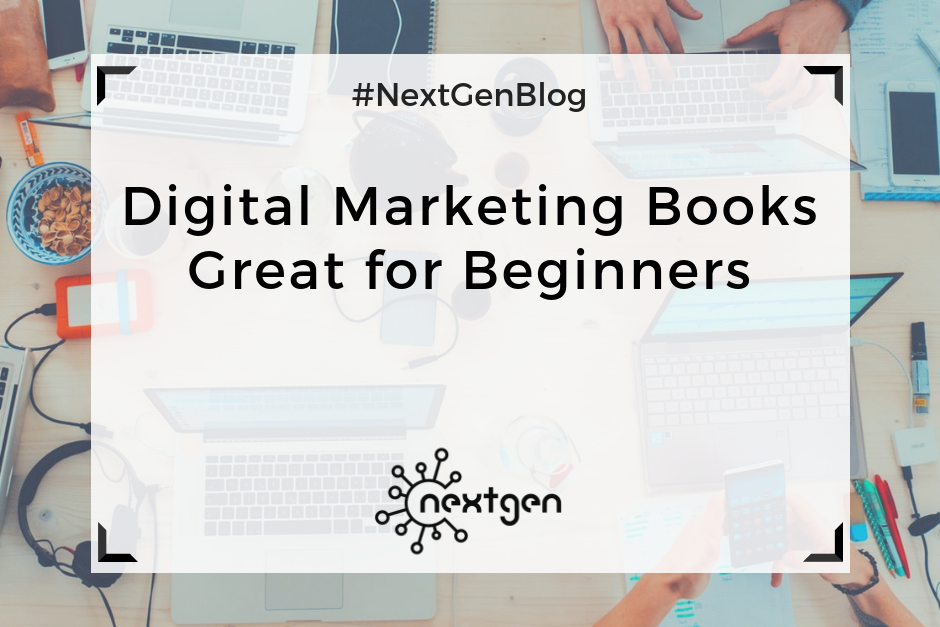
by Sofi | Oct 5, 2018 | Other
If you don’t have a college degree in digital marketing but want to pursue a career in the industry, or you’re a digital marketing newbie who needs a digital marketing strategy to promote your business–there are plenty of books that can help you achieve those goals. There is a rather large variety of digital marketing books that tackle different topics, but here is a list of books that are great for beginners:
#1 Digital Marketing For Dummies
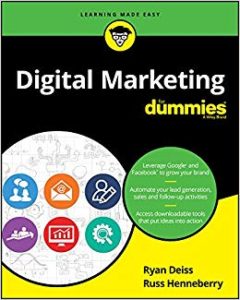
As the title suggests, this book is useful for people that don’t have any knowledge or experience in the field of digital marketing. It is a simple 300-page guide covering all important aspects of digital marketing, including: customer journey, marketing planning, landing pages, blogging, SEO, SEM, social, paid display, email, and data and analytics.
By reading this book you will be able to:
- Develop an individually tailored digital marketing campaign
- Offer an effective lead magnet to convert visitors
- Keep your audience invested in your brand, products, and services
- Create a return path with frequent and strategic communication with your customers
Authors: Ryan Deiss, Russ Henneberry
#2 Understanding Digital Marketing: Marketing Strategies for Engaging the Digital Generation
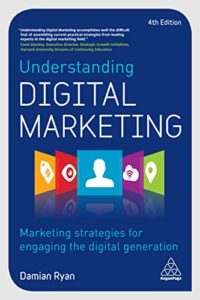
This book looks at the past, present, and future of digital marketing. It can help both beginners and experienced marketing professionals understand the digital media world and learn how to succeed. It covers topics such as: search marketing, social media, Google, mobile marketing, affiliate marketing, email marketing, performance marketing, customer engagement, and digital marketing strategies.
Author: Damian Ryan
#3 Digital Marketing: Strategy, Implementation, and Practice

This textbook is great for students or anybody interested in learning about digital marketing from scratch. It is an excellent guide for companies who want to benefit from digital media and improve their marketing strategies. It includes case studies and interviews with leading companies such as Facebook and eBay. Readers can gain a valuable and realistic understanding of digital marketing, as well as learn how to create their own digital marketing strategies.
Authors: Dave Chaffey, Fiona Ellis-Chadwick
#4 Digital Marketing Strategy: An Integrated Approach to Online Marketing
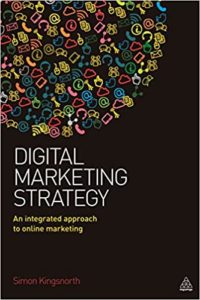
“Digital Marketing Strategy” is a book that provides a very comprehensive step by step guide through the process of creating a digital marketing strategy, including a lot of practical examples, case studies, illustrations, etc. It covers social media, SEO, content marketing, acquisition, personalization, marketing automation, user experience, customer service, and other relevant digital marketing topics. The book is an insightful and useful read for both marketing professionals and beginners.
Author: Simon Kingsnorth
#5 The art of digital marketing: The Definitive Guide to Creating Strategic, Targeted, and Measurable Online Campaigns
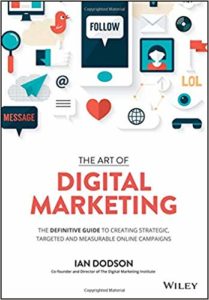
This book is centered around an innovative methodology for successful digital marketing: start with the customer and work backwards. It follows an approach of the Digital Marketing Institute (DMI) called the 3i principles -Initiate, Iterate and Integrate. The book also contains exercises and action plans that can help you create a digital marketing strategy, as well as insightful case studies for all chapters.
Reading this book will help you:
- Get inside the customer’s head with deep consumer research
- Constantly improve your campaigns based on feedback and interactions
- Integrate digital activities across channels, including traditional marketing
- Build campaigns based on customer choice and control
Author: Ian Dodson
***
Here are some honorable mentions of other books exploring different areas of digital marketing that you should definitely consider reading as well: “They ask, you answer” by Marcus Sheridan, “Youtulity” by Jay Baer, “The big data driven business” by Russell Glass and Sean Callahan, “The power of visual storytelling” by Ekaterina Walter, “Content Inc.” by Joe Pulizzi, “Convert!” by Ben Hunt, “You’re my favorite client” by Mike Monteiro, etc.
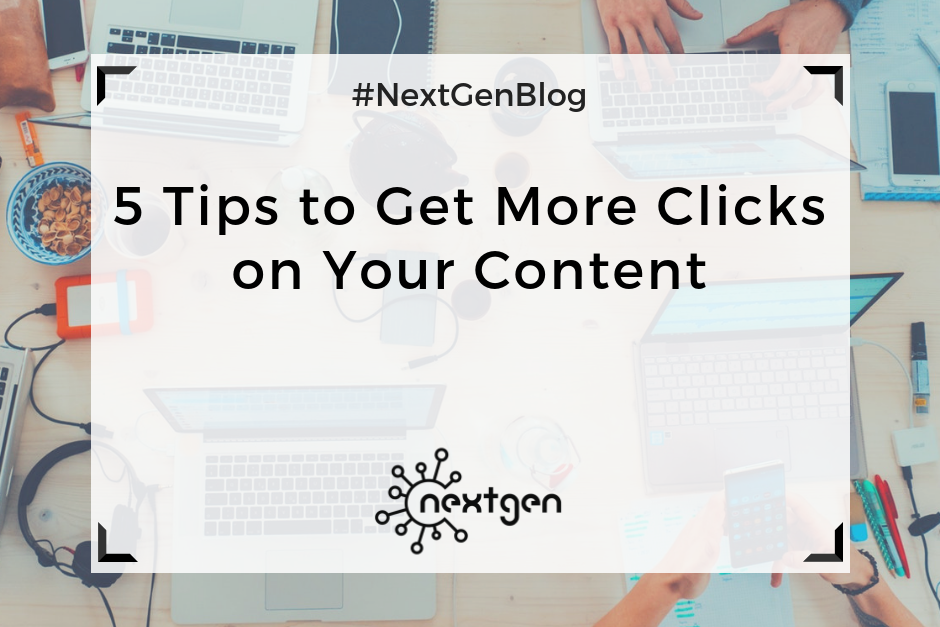
by Sofi | Sep 28, 2018 | Other
Everyone has told you that great content is key for your brand’s online success. So you regularly post great content on all of your social media, your website, your blog, etc…now what? Having online content is not enough to build your brand; you also want to attract the attention of your audience in a way that generates click-throughs. Here are five tips on how to get more clicks on your content.
#1 Create Catchy Headlines
Whenever you are creating a headline, you want to make sure that it does two things: grabs attention and peaks interest to find out more. There’s an overwhelming amount of content online, so your headline has to first make someone scrolling stop in their tracks. Then, it has to make them want to follow through by clicking on the content. One good method of achieving this is to leverage the “curiosity gap.” Headlines that use the “curiosity gap” are specific enough to intrigue the reader but not so specific that they satisfy the reader’s curiosity.
#2 Promise Value
Have you ever seen something online and questioned why it mattered? Your audience is more likely to click on content when they know exactly what value the piece is offering them. Many advertising copywriters suggest using the phrase “how to” in your content to provide a specific direction and what to expect. Your content should speak for itself as to why your audience should pay attention. It should be simple and straightforward so there is less thinking involved and more clicking!
#3 Clearly Address Your Audience
Part of creating great content in the first place is having a clearly defined audience. Do not be afraid to directly shout them out to direct them to your content. This lets the reader know that this material is right for them, and they should continue paying attention. You can grab attention by stating who the content is for or asking the reader if they fit a certain profile, such as “Beginner’s Guide For Small Business Startups” or “Are You an Independent Writer Seeking Work?”
#4 Include Visuals
No matter what device or platform your audience is using, images and videos attract more attention than plain text. Social media posts should always include visuals whenever possible to draw attention and stand out amongst a flood of other posts. Blog posts can use visuals to help the reader immediately understand what they are about to read and engage them to continue. Websites should use visuals, whether images or graphics, to direct the viewer as to what actions they should take. Visuals provide cues for your audience that help generate clicks.
#5 Place Links at Beginning of Posts
Social media is a great place to promote links and generate click-through traffic to websites and blogs. Generally, more people click on links provided in social media posts that are placed a quarter way in from the start. Although placing links at the very end can be more convenient, it is proven that the positioning does not lead to as many interactions.
These five tips on how to get more clicks on your content can make your posts more valuable for your business. Always keep in mind who your audience is and what action you want them to take.
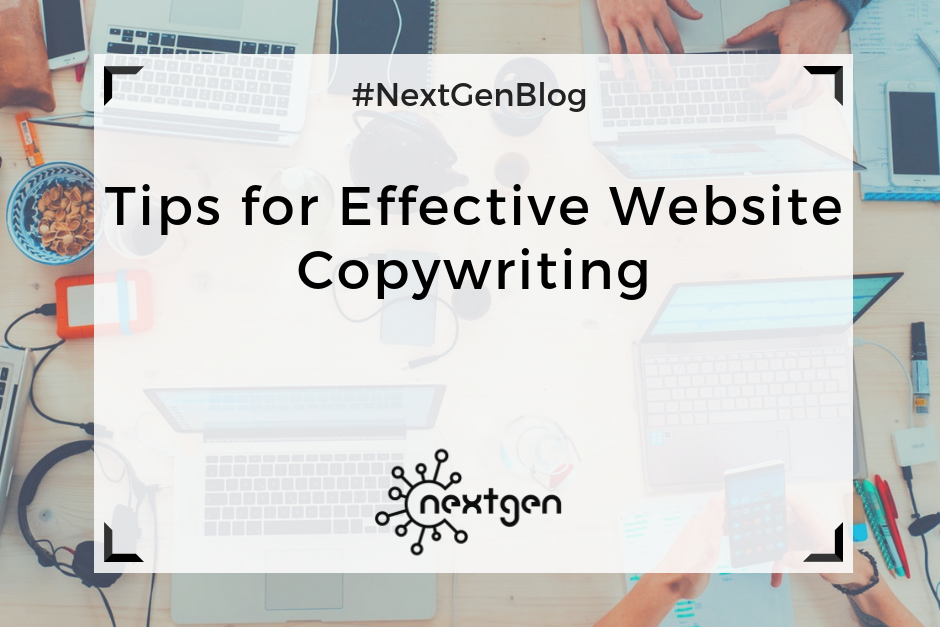
by Sofi | Sep 21, 2018 | Other
Writing good copy for your website is very important if you want to keep visitors interested in your business and products. The advertising pioneer Shirely Polykoff once said, “Copy is a direct conversation with the consumer.” So, it’s up to you to make the conversation enjoyable for your consumers.
If you want to start writing great web copy, try the following tips:
#1 Write clear and comprehensive content
First and foremost, the content you write on your website needs to be clear, to the point, and easy to understand. Also, you need to make sure you don’t have any grammar or punctuation mistakes. If your visitors don’t get what you’re saying, they will lose interest and leave your website.
#2 Be concise
When writing copy, try to use short words, short sentences, and short paragraphs because most people have short attention spans and avoid content that is too long to read. Make your content short and simple yet memorable.
#3 Make your content skimmable
To make your content skimmable, use informative headings, create numbered lists, bold important words and phrases, adjust font sizes, and use enough white space between paragraphs.
#4 Use active voice sentences
You should tend to use active voice sentences to provide a better experience for your readers. Active voice sentences are usually shorter, clearer, and more direct as opposed to passive voice sentences.
#5 Be positive
Positive words have a huge impact on people’s emotions, and they are more likely to remember them. This is why you should include as much positive language in your web copy as possible. There are times when negative language is appropriate as well, but you should be very careful of when and how you use it.
#6 Avoid using jargon
If you want your website to look professional you should avoid using jargon. If you use jargon, you risk getting misunderstood and some visitors might not take your website seriously. Instead of using jargon, stick to words that target your audience.
#7 Use storytelling
Build relationships with your customers and keep their attention by telling a good story. Honest and compelling storytelling will get your customers more interested in your business and products, and it will make you seem more credible and authentic in their eyes.
#8 Include visuals
To improve your audience experience on your website, enrich your content with different types of visuals whenever appropriate. You can include photos, videos, infographics, or any type of visual that will make your content more appealing and/or informative.
#9 Create CTAs
Having great web content is not enough if you want to convert your visitors into leads and customers. Encourage your visitors to take action on your website and move them down the sales funnel by creating a powerful call-to-action. Depending on your specific goals, you can create CTAs such as: Subscribe Now, Sing Up for Free, Download Brochure, etc.
#10 Include relevant sources
Back up your claims with relevant sources. For example, you can use statistics, articles, case studies, and other relevant sources to prove the information you share on your website is true.
#11 Proofread and edit
However confident you are that your web content is great, there is always a possibility that you made some mistakes. Therefore, always proofread your content to make sure everything is correct, and if necessary make some edits as well.
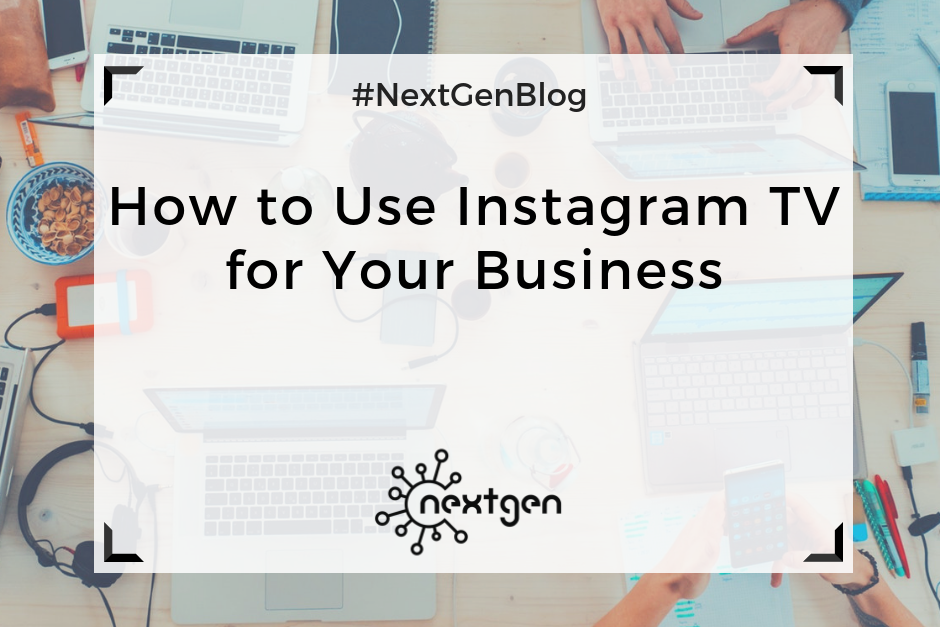
by Sofi | Sep 14, 2018 | Social Media Marketing
As one of the leading innovative social media platforms, Instagram released it’s newest feature over the summer: IGTV. This feature allows users to take longer videos in a vertical format suited for mobile devices with enhanced discoverability through channels. Instagram took advantage of the statistics revealing more people are watching digital videos than television, with mobile videos accounting for the majority of mobile data traffic. Using a simple and intuitive design fit for your mobile device, anyone can create content on IGTV. So, how can you utilize IGTV for your business? Check out these tips.
#1 Build stronger connections with customers
Use these longer and more permanent videos for deeper storytelling behind your business. IGTV allows for videos up to an hour long, and it stores them on your personal channel. This can be used to a brand’s advantage by showcasing other dimensions of your business without being limited to one type of content, length, or format. Sharing stories that resonate with your customers will build a stronger relationship between them and your brand. Meaningful connections that show the human side of your business are longer lasting.
#2 Create a better mobile experience
With 800 million users, it’s important to cater to the mobile Instagram user in a way that best suits their mobile experience. One of IGTV’s biggest boasts is the vertical format that perfectly fits mobile screens. Do not repurpose and upload old horizontal videos. Instead, start fresh and take your time creating new content that embraces the vertical format. Online audiences are more in touch with amateur videography than that of professionals. Vertical videos feel more personal, less produced, and are therefore more appealing to your audience.
#3 Know when to post
The general social media tip of knowing what times are best to post to reach your audience still applies. Instagram is currently giving IGTV priority by adding notifications for new videos, so users scrolling through their feed will instantly know when you upload content. This makes posting when your users are most likely using the app very important. Now is the time to take advantage of this new feature’s extra promotion. Be one of the first to step out and use IGTV! Consumers will remember that.
These tips will help you take advantage of IGTV as a feature. However, you might be wondering what kind of content will help you grow your business on IGTV. Check out these video content ideas.
#1 Frequently Asked Questions
Do your current and prospective customers continually ask the same questions on your posts, website, by email, and by phone? You can film a weekly Q&A answering all of the frequently asked questions you collect. This provides your customers with important information with a personal touch that can build their relationship with your brand. With some luck, you can save customer service time as well!
#2 Behind the Scenes
Everyone feels more connected to a brand when they can see what happens behind the scenes. You want your audience to respect your work and feel loyal to your brand. Bringing them behind the scenes, even digitally, makes people feel included. Customers want to see the real you, and using IGTV provides a more authentic approach.
#3 Product Reviews
Most likely, your Instagram followers follow you because they are already interested in your product. IGTV is a great way to give more in-depth product reviews that are visually appealing and personal. Tag other accounts that are relevant or included in your product reviews to make them aware of your content to increase reach.
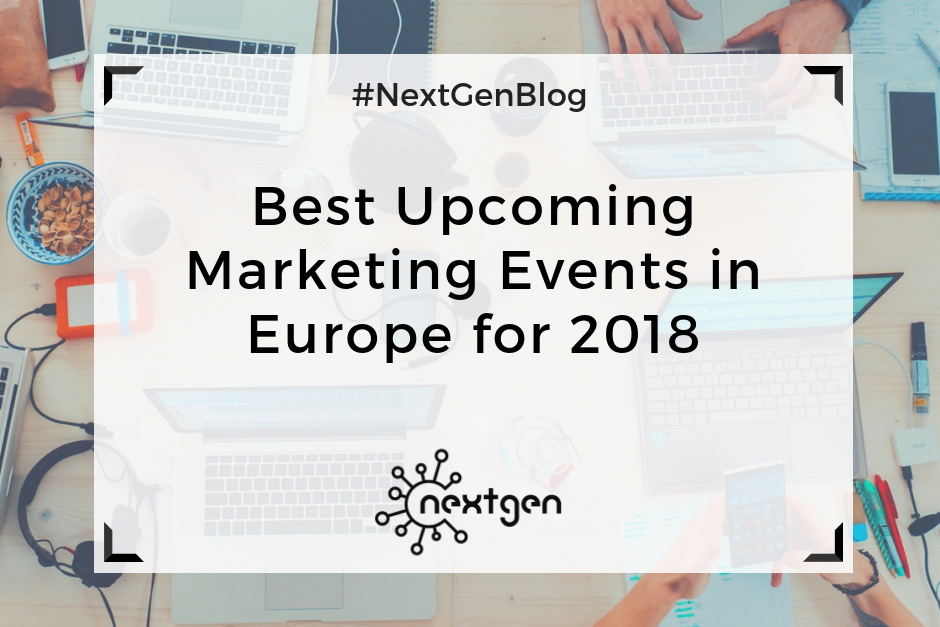
by Sofi | Aug 24, 2018 | Other
Every year multiple marketing events take place in different cities around the world in various forms: conferences, summits, workshops and classes, seminars, trade shows and expos, etc. People gather together at these events for the purpose of networking, learning about new products and technologies, searching for new business opportunities, discussing important marketing topics and trends, and more.
Here is a list of the best upcoming marketing events for 2018:
#1 DigiMarCon (Digital Marketing Conference)
Date and location: 5-6 September – London, UK
Starting price: £497
Website: https://digimarconeurope.com/
DigiMarCon is one of the most important marketing conferences in Europe. Attending this conference will provide you the opportunity to learn about digital marketing from many marketing experts, as well as the opportunity to network with other marketers and business professionals. Some of this year’s conference topics include: Digital Strategy, Web Experience Management, Mobile Marketing & Retargeting, Social Media Marketing, Video Marketing, Email Marketing, Data Science & Big Data, Growth Hacking, Programmatic Advertising, and other relevant digital marketing topics.
#2 Web Summit
Date and location: 5-8 November – Lisbon, Portugal
Starting price: €495
Website: https://websummit.com/
The Web Summit is considered the largest technology conference in the world and is held annually since 2009. Last year, the conference had 60,000 attendees, which ranged from 500 Fortune companies to small companies within the technology industry. As of 2016, Web Summit is a host to various independent conferences; this year there will be 25 conferences, some of which include: AutoTech, ContentMaker, Corporate Innovation Summit, DeepTech, Growth Summit, Startup University, etc. The Web Summit is an event focused on internet technology, so digital marketers can greatly benefit from attending it.
#3 #DMWF Conference & Expo
Date and location: 19-20 September – Amsterdam, Netherlands
Price: €399 for one day, €699 for two days
Website: https://digitalmarketing-conference.com/europe/
The #DMWF Conference & Expo takes place in Amsterdam next month, and it is an event focused on digital marketing and social media. If you want to learn from some of the most disruptive thought-leaders in the industry–then this is the right event for you. Some of the session topics that are going to be covered this year are: successfully forming an interactive digital content marketing strategy to increase engagement, exploring the value of your website analytics, the value of diversity in marketing, understand how VR and 360 are transforming the marketing and communication industries, understanding the way AI is going to revolutionize and impact on the way brands interact with customers, and other important topics.
#4 NEXT Conference
Date and location: 20-21 September – Hamburg, Germany
Price: N/A
Website: https://nextconf.eu/
NEXT conference is a two-day event where you can learn about important digital trends and how they transform the marketing industry. The main topic for the conference this year is “Digital Fix – Fix Digital,” which is exploring the ways in which the digital world can be transformed. Attendees of this event will have great networking opportunities, as well as an opportunity to enjoy good music at the Reeperbahn Festival. You can get a ticket to attend the conference by applying for one of the four attendee groups: Regular Attendee, Startup Attendee, Student Attendee, or Press.
#5 Social Media Week London
Date and location: 14-16 November – London, UK
Price: £519 (Standard pass), £795 (Premium pass)
Website: https://socialmediaweek.org/london/
The SMW London is a leading three-day conference for marketers that explores how social media and technology influence business, society, and culture. This year the conference’s main theme is “Closer” which will explore the conflict between community and individualism. Three important sub-themes will also be discussed: The You Universe, The Social Divide, and AI vs. Humanity. If you’d like to learn about the newest trends and best practices in social media from leading business and marketing experts, then don’t miss the opportunity to attend SMW London this November.
***
Attending these types of events can be very beneficial for your business because it’s a great way to meet relevant people from the marketing industry and learn valuable information that you can later use to improve your marketing efforts.
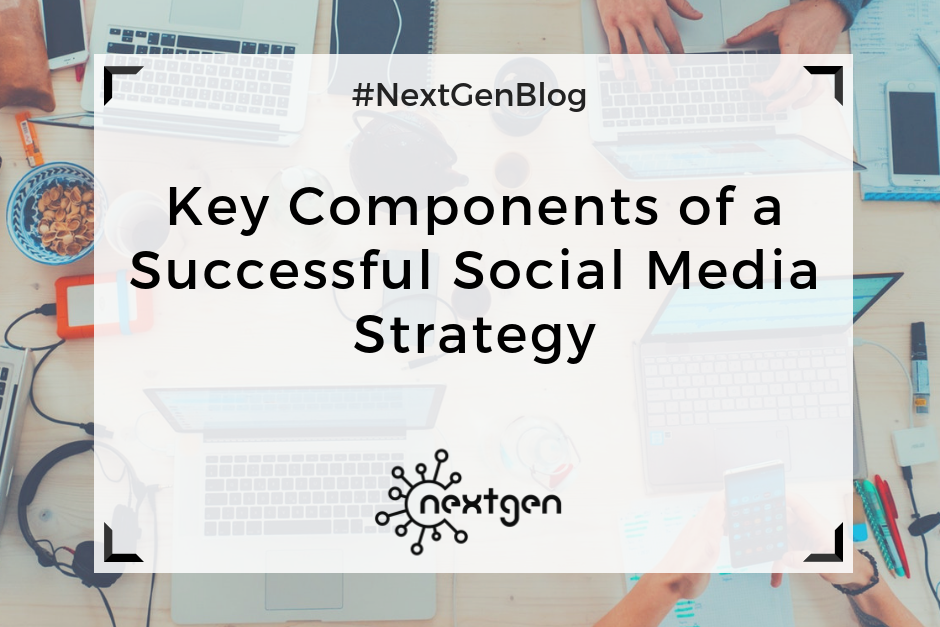
by Sofi | Aug 17, 2018 | Marketing Strategy, Social Media Marketing
Every business needs a solid marketing strategy to ensure that they’re meeting the needs of current and potential customers to the best of the company’s ability. In today’s digital world, utilizing social media platforms and creating a social media strategy is an important element of this overall marketing strategy. According to HostingFacts, there will be an estimated 2.62 billion social media users in 2018. Social media is one of the most powerful (and FREE) marketing tools for your business, so you need a strategy to use this tool effectively. Here are the key components of a successful social media strategy.
#1 Identify Ideal Customers
Your social media posts should speak to a specific audience, which should also be your ideal customers. Creating or using your existing buyer personas will help you define and target the right people in the right places at the right times with the right messages. This will also help you choose the right social media platforms as part of your strategy later on. To create a buyer persona, you need to identify your ideal customers’ demographics, interests, problems, likes, dislikes, and motivations. Then you can create posts that best appeal to them.
#2 Set Goals and Objectives
The point of your marketing strategy is to accomplish business goals. You cannot move forward without knowing what you are working toward. The best way to do this is to look at your business’s needs and identify what you want to achieve with your strategy. Then, decide how you want to use social media to achieve these objectives. However, do not try to tackle all of your objectives at once through social media or else the messages will be confusing for followers. Focus on one goal at a time and switch when necessary.
#3 Choose Your Platforms
Most social media users have accounts on multiple platforms, but not every platform is right for your business. To effectively reach your audience, you will want to utilize more than one network, but do not attempt to engage customers on all networks or you will spread yourself too thin. The goal is to stay active on the platform you do use. Each platform caters to specific kinds of content and draws different demographic groups. To avoid wasting time and effort on the wrong platform, use your buyer personas to choose the right platform. Another helpful exercise might be to create a customer survey to find out what social media sites your clients actively use.
#4 Create Content Plan
Catching the attention of your audience requires great content. There are three main components to consider when creating a content plan: type of content, time of posting, and frequency of posting. All three of these components are heavily impacted by your platform, and each social media site has a unique “sweet spot” for each. All content online is generally the most successful when it is visual, emotional, and useful. This can be used as a guideline when deciding what kinds of content to create.
#5 Assigning Team Roles
The first step of deciding how to implement this strategy is deciding whether your internal staff will head your social media strategy, you will outsource the work, or have a combination of the two. Having a clear understanding of who is responsible for what will increase productivity and prevent confusion or overlapping efforts. Your strategy should assign all of the necessary roles and outline the exact responsibilities and expectations of each role. There are many tools available online to help your team develop content on their own, track the analytics of your social accounts, and manage/assign tasks to your team.
#6 Decide on Budget
Social media can be a completely free resource for your marketing needs, but there are also ways to spend money on any budget to increase effectiveness. There are also other expenses to consider such as social media monitoring and content creation. Will you need a graphic designer? Will you need video production? Do you plan on buying ads? Make a list of the tools and services you need, and then decide on the budget required for your current strategy. You can adjust your strategy until it fits your ideal budget
#7 Track Analytics and Adjust
Once you have your social media strategy outlined, it’s time for action! Execute your plan, and wait for results. Analytics tracking is one of the most important things you can do to improve your social media marketing strategy over time because it shows you what kind of content and promotion strategies are working or not working. There are many tools available online to help you track the progress of your social media accounts and analyze the data. Continuously making changes in order to improve the effectiveness of your accounts should be the most important factor in your social media strategy.
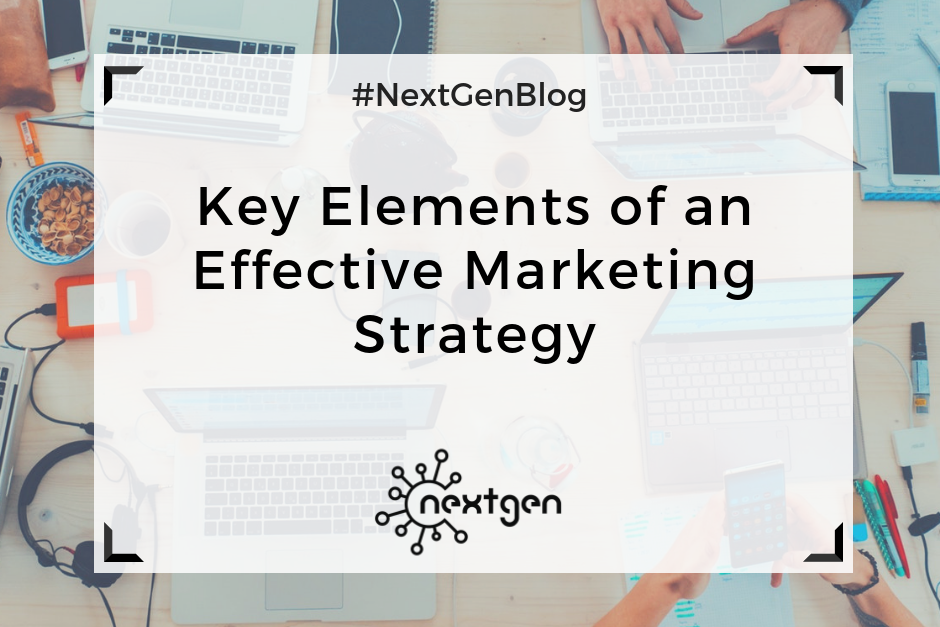
by Sofi | Aug 10, 2018 | Marketing Strategy
Coming up with an effective marketing strategy is very important for the success of your business because it can help you get new customers, increase sales, and gain a sustainable advantage over your competition. Essentially, a marketing strategy details what you want to achieve for your business and a plan of how you’re going to achieve those things.
These are some key elements that you should include in your marketing strategy:
#1 Goals
When you create your strategy, the first thing you need to do is to clearly define your business and marketing goals. Your goals may include increasing profits, getting new customers, building brand awareness, or anything else you want to achieve for your business. Setting realistic goals will help you decide where to focus your marketing efforts.
#2 Segmentation, targeting, and positioning
Identifying your potential customers and their needs is an essential part of a successful marketing strategy. You can conduct customer research to find out which customer segments you need to address. Then, you should evaluate the attractiveness of each segment and decide which segments you are going to target. Finally, you should develop a positioning strategy for each of your target customer segments.
#3 Brand messaging
Brand messaging communicates the value of your brand to your target audience and should ultimately convince them to buy your products or services. A unique and powerful brand message is one that people can easily associate with your brand. So, make sure the message you craft tells a story that makes your brand noticeable and differentiates you from your competitors on the market.
#4 Communication with customers
Maintaining effective communication with your customers is crucial for your success. So, another important component of a good marketing strategy is planning your communication tactics. You should know when and how to communicate with your audience to build and maintain meaningful connections.
#5 Promotional Activities
Once you know your goals, identified the elements of the STP process, have a nicely crafted brand message, and planned your communication strategy–it’s time to plan how you are going to promote your business, products, and services to your audience. You can achieve this with any type of promotional activities, such as: advertising, public relations, sales promotions, digital marketing, etc.
#6 Monitoring and evaluation
You should constantly monitor and evaluate your marketing strategy to know what works and what doesn’t. This way you’ll be able to make more informed decisions in the future and improve your marketing strategy over time.
#7 Marketing plan
When you have your marketing strategy prepared, the next step is creating a marketing plan of how you’re going to execute that strategy. The marketing plan should detail all the marketing activities you’re going to undertake and when. You need to have both a good marketing strategy and a good marketing plan for your marketing to be effective.
















